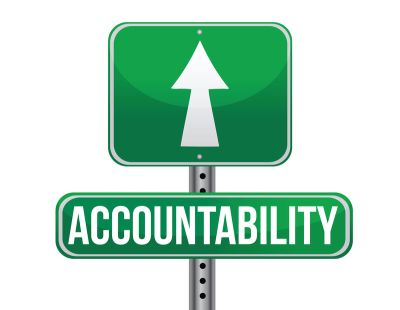How To Increase Accountability In Safety
It is impossible to create accountability in safety without getting every employee to make it a part of their job.

Safety managers and front-line supervisors want employees to be more active and vocal about safety. They want employees to be more engaged in the decisions that the employees make and the results they get. They want more active participation in reporting, in actively talking about safety and a much higher involvement in being vocal at safety meetings.
Apathy Is The Enemy Of Accountability
When people don’t care about their job or the decisions they make, it is easy to try to blame someone else or blame the process or procedure for failing. In order for people to become accountable for their actions on the job, they have to become engaged in their work.
Safety without accountability is nothing more than an enforcement program of rules, processes and procedures. Accountability suffers from the mistaken belief that it is about assessing blame and pointing fingers. Honestly, who would want to step up and be blamed?
In order to help raise workplace safety accountability, here are three things you can start doing today:
1Safety Mission Statement: Can your people truly say, “I got this” after reading the company mission statement? Do they understand every detail of the safety statement and do they buy-in to it fully? If not, then you are going to have to develop a local mission statement: a mission that speaks to the people in your unit or department. It should be a mission statement that every single person can agree with and include the big elements of what you want covered; communication (reporting), teamwork (looking out for each other) and accountability (if I see it, I need to get it fixed). Corporate safety mission statements are so muddled full of ambiguity that workers can not identify what is expected of them and how they should respond in actual situations. So, take the corporate safety statement and break it down into bite-sized pieces, something that each employee could simply read and then respond with, “I got this.” If they can’t identify how they are accountable for every part of the mission statement, then they “don’t got this” and getting them to be accountable for their actions is going to be terribly difficult. If your people “don’t got this,” who does?
2Safety Mantra or Trigger: Do not even think that a tired old slogan like “safety first” is going to cut it here. A safety mantra is not a tired old slogan. A safety mantra is a mindset trigger that every worker can wrap their heads around. Professional athletes use mantras and triggers to get their heads in the game and focus them on-task. In the case of front-line employees, they need only recall the words of the mantra/trigger to know how to respond next. The mantra might even be as simple as, “we do accountability here.” Since accountability isn’t only about safety, it’s in all aspects of the job, the word safety doesn’t even need to be in the mantra. Sports teams have a mantra/trigger like “every game is important.” That mantra is posted everywhere to remind them constantly and get deep into their subconscious about every game and every moment being important. What can you use as a trigger or mantra that could penetrate deep into their subconscious and not be viewed as a simple safety slogan?
3Safety Meetings Discussion: In safety meetings, set up scenarios and examples of incidents and near misses and ask your people to shout out who should be accountable in a given situation. As an example, a truck driver backs into a moving loader when the driver could no longer see the flag person/spotter. Ask who should be accountable for this incident. Set up scenarios and ask your people to participate. Have them come to their own discoveries about accountability and how it works. There should be a lot of discussion - especially if you use real people’s names (OK, Bob, you’ll be the driver of the truck, Jack you’ll be the flag person and Don, you’ll be operating the loader). Your discussion of process and procedure becomes more vivid when you use real people in your scenarios. It gets even more engaging when you give everyone the chance to voice opinion on who should be held accountable in a given situation.
It is impossible to create accountability in safety without getting every employee to make it a part of their job.
Accountability is one of the subjects that I help your people explore in my safety keynote presentation, “Trust The Process: Instill A Safety Attitude To Build An Engaged Culture Of Safety.”



